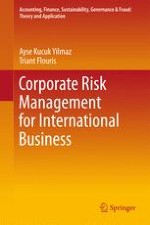Abstract
Strategy, in the global business environment, is tied to competitiveness. Human resource management is inextricably linked with other organizational management functions as contemporary organizations are in need of both competent and globally minded human resource talent. To achieve this aim, organizations must exercise care in creating both a strong and sustainable organizational culture. Furthermore, in aviation, risk exists in people, procedures, equipment, acts of nature, security, and so on. The record of safety in the industry shows us that the human element in aviation presents the biggest risk for such reasons as attitude, motivation, perception, ability, awareness level, culture, discipline, ethic, training, and so on. Enterprise/corporate risk management-based strategic approach helps organizations improve performance in both competitive and differentiation areas such as training and awareness, culture and attitudes, individual creativity, and developing innovative risk solutions. In seizing opportunities and minimizing operational losses, managers should integrate their strategy and human resource practices with risk management. We assume that considerable interrelations exist between corporate strategy, human resources management, organizational and national culture, and values of individuals and risk management. These interrelations have the potential to affect corporate strategy. Risk management presents reasonable assurance to improve a corporation’s talent management, competitive human resource management, and employer branding, as well as to ensure effective ways of education and training, and recruit and retain high-performance workers at all levels. Hasan Polatkan Airport which is operated by Anadolu University has a unique structure among international airports in the world in terms of that it is operated by cooperation of government and university and its operations are international. A problem with this research is flexibility, which is needed due to the university’s autonomous structure and dynamic nature of the aviation industry, and conflicts with bureaucracy that have dominant position on government. We will present our research which was designed via the Analytic Hierarchy Process (AHP) methodology applied to personnel selection at Anadolu University Airport. An analytic hierarchy model has been created with the purpose of determining priority personnel selection criteria. The model has been analyzed through a sample using the AHP which is a multi-criteria decision-making method. Saaty Compliance Indicator has been used to understand how close estimated values obtained via AHP to actual data. It is possible that the model developed can be generalized for the aviation industry. We aim to contribute to the management and strategy field via help improvement awareness to the strategic human resource management together with this model.
